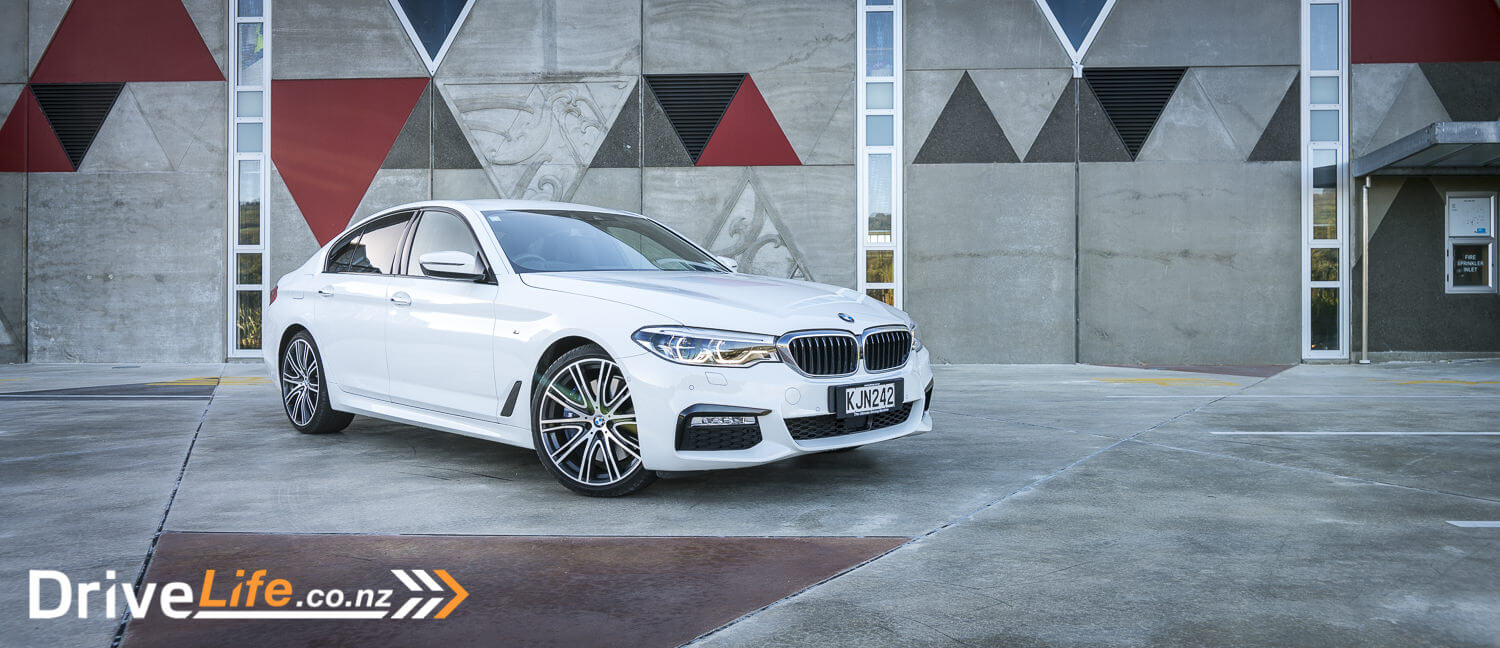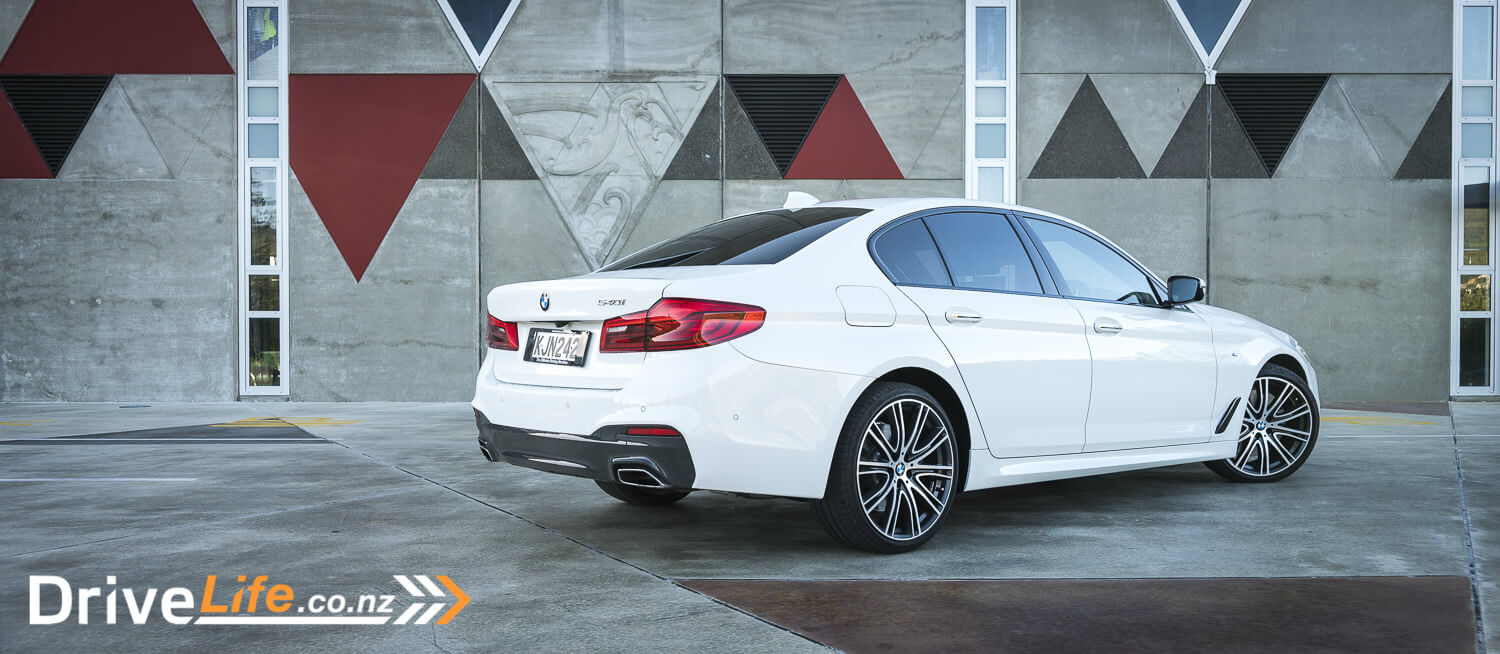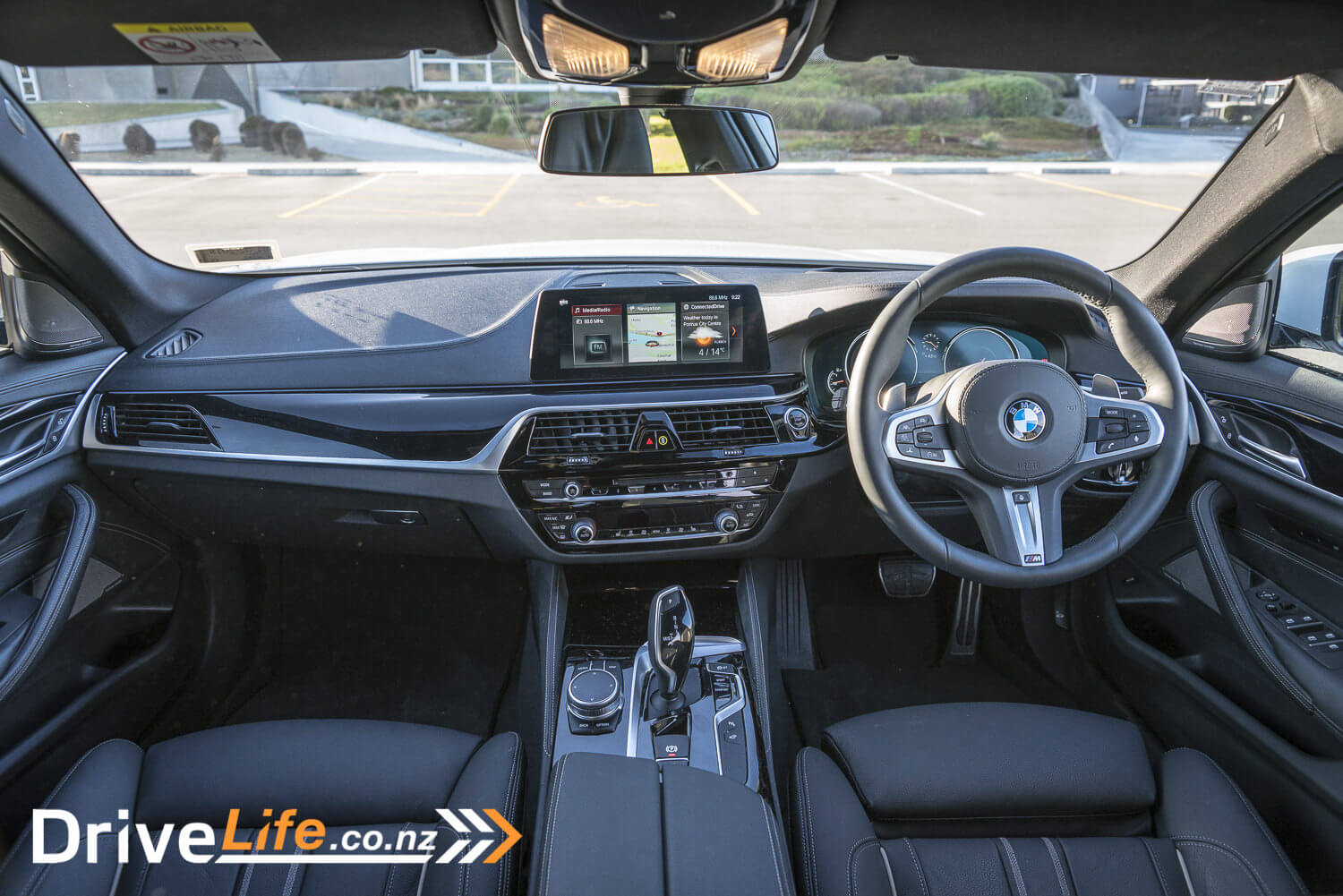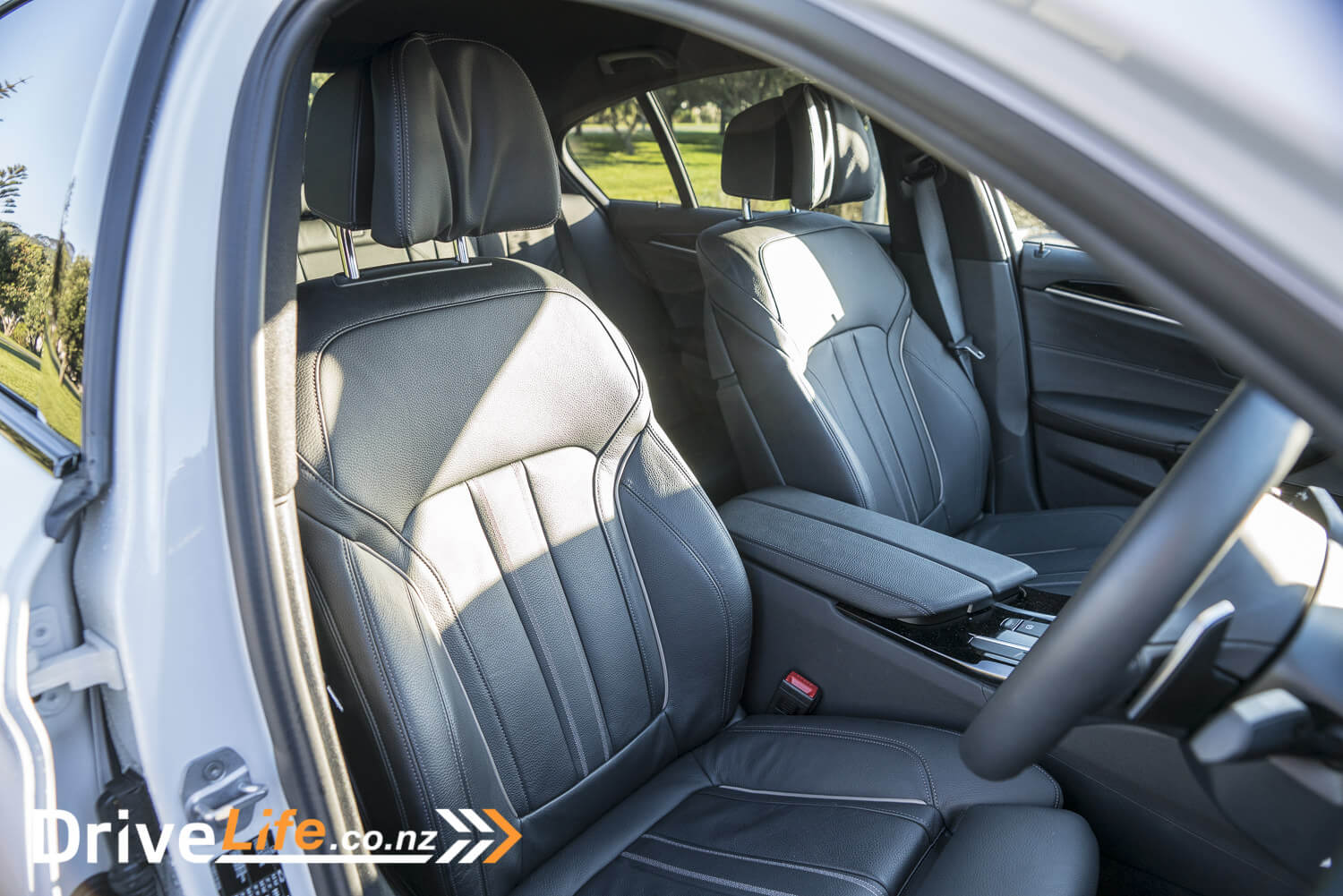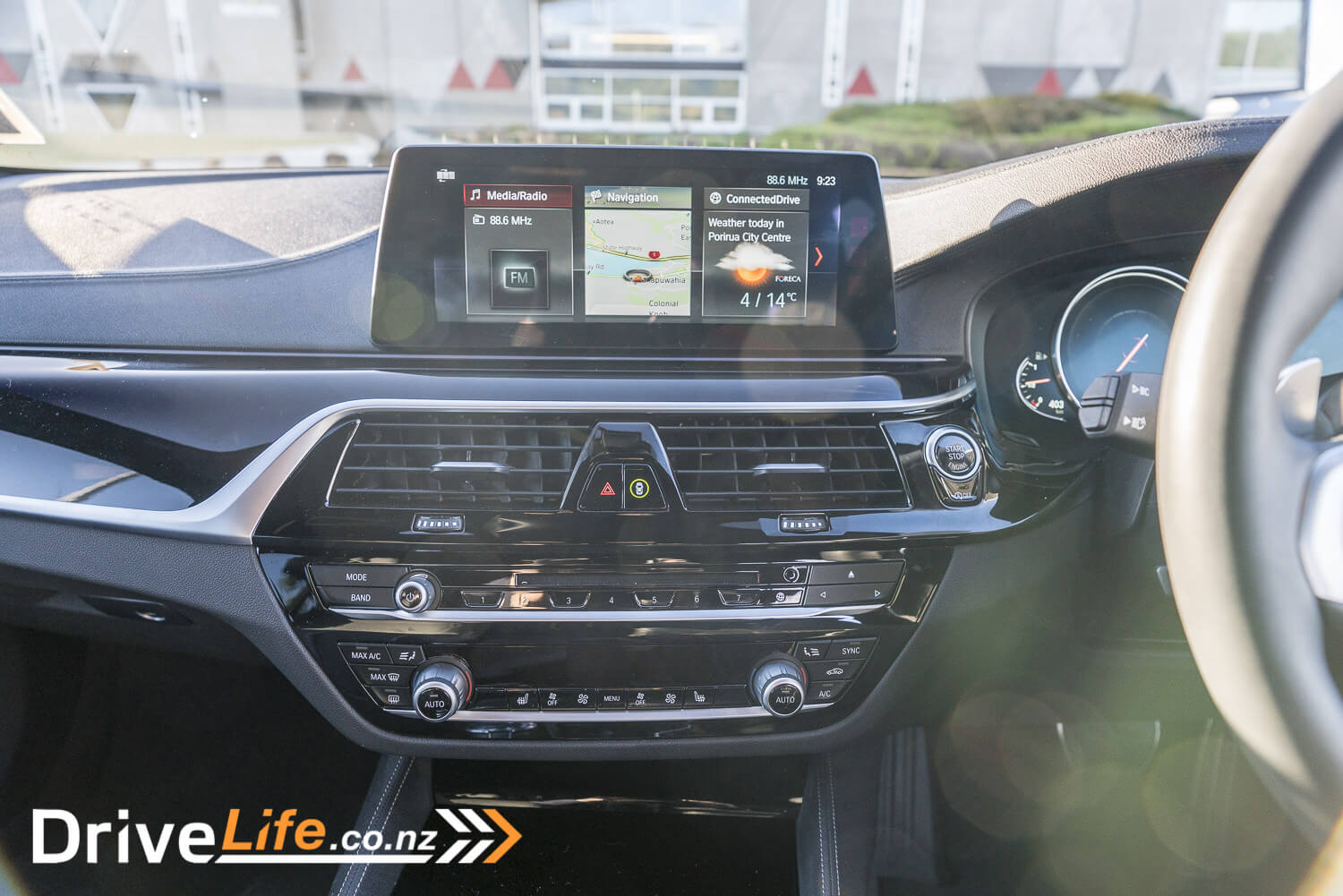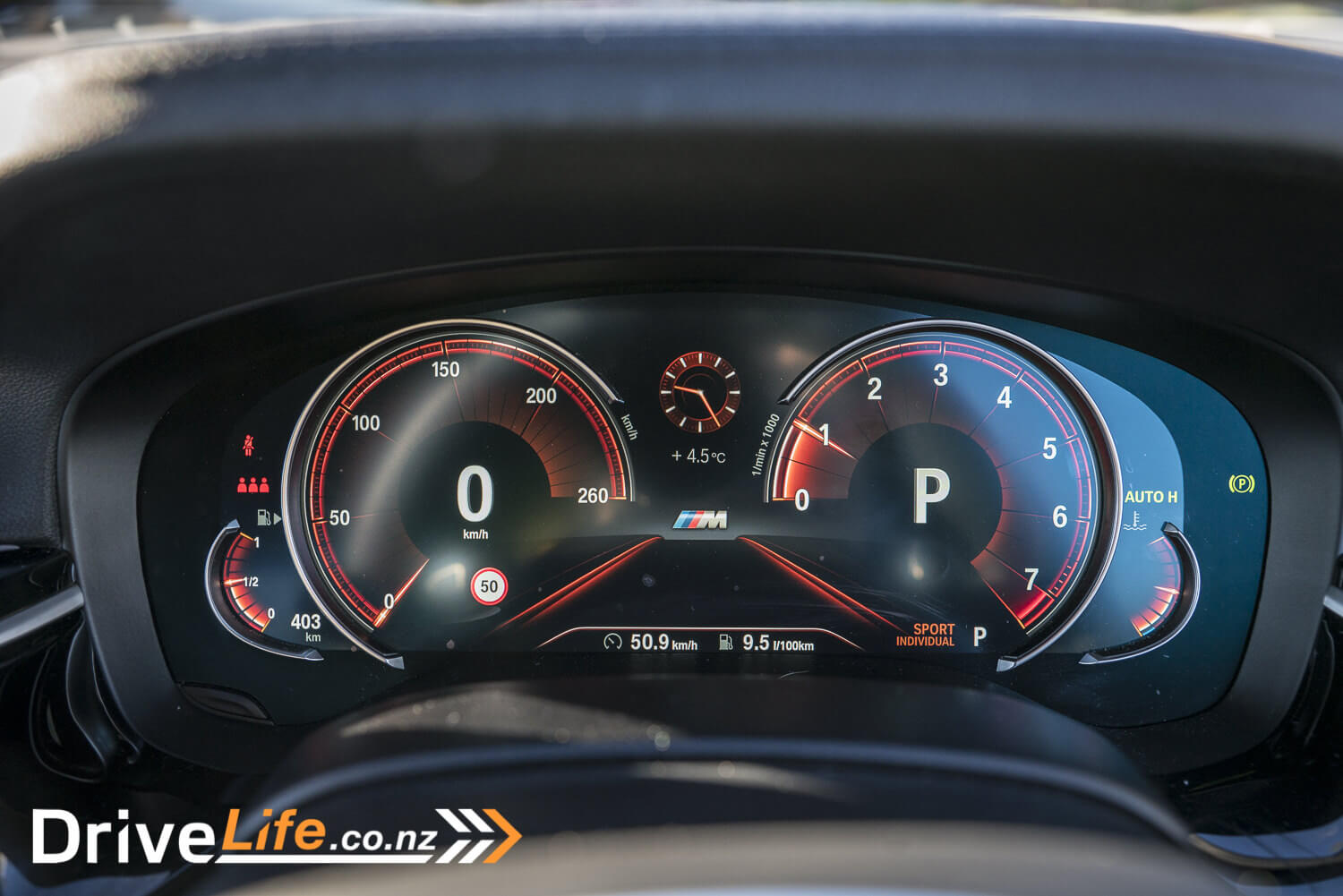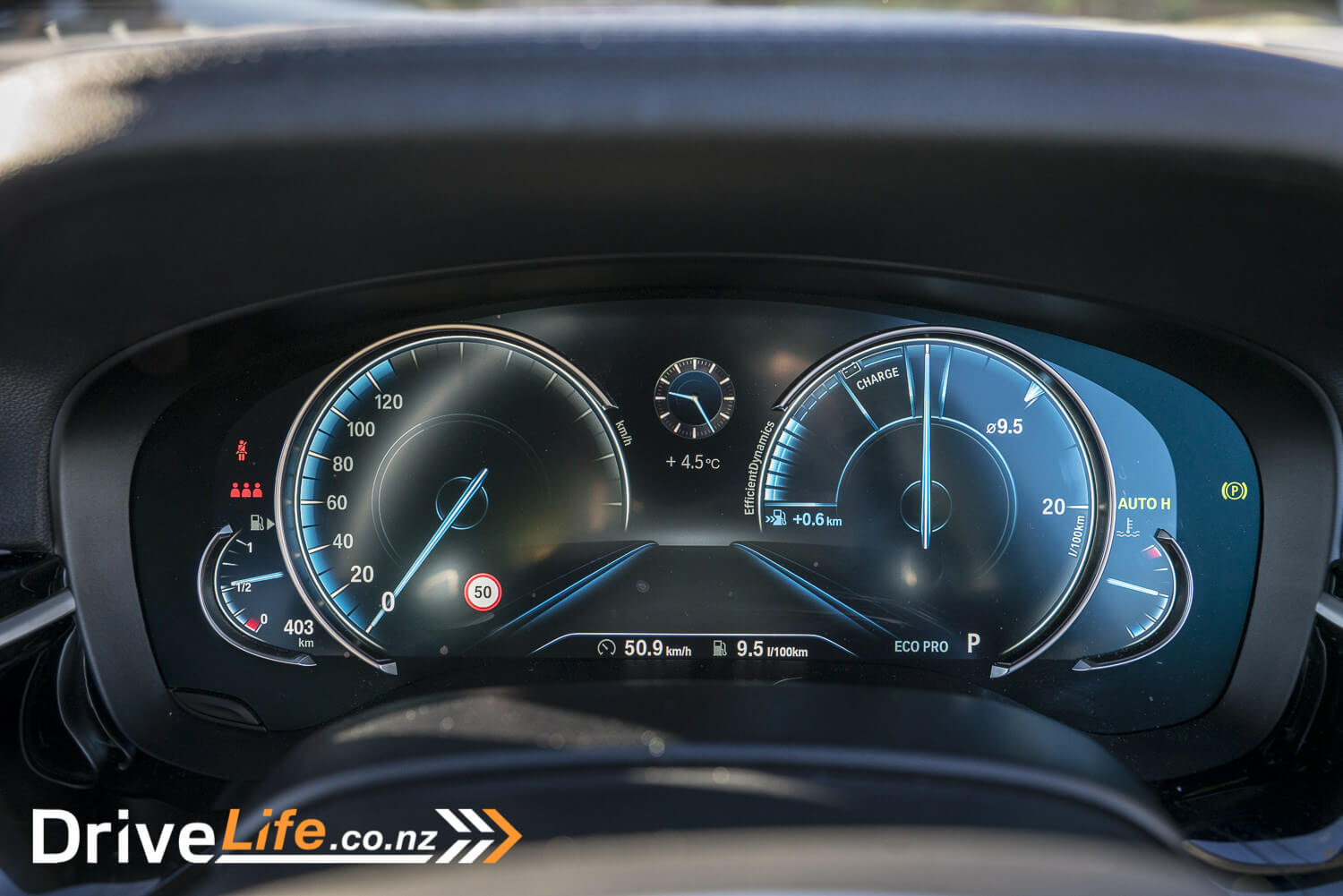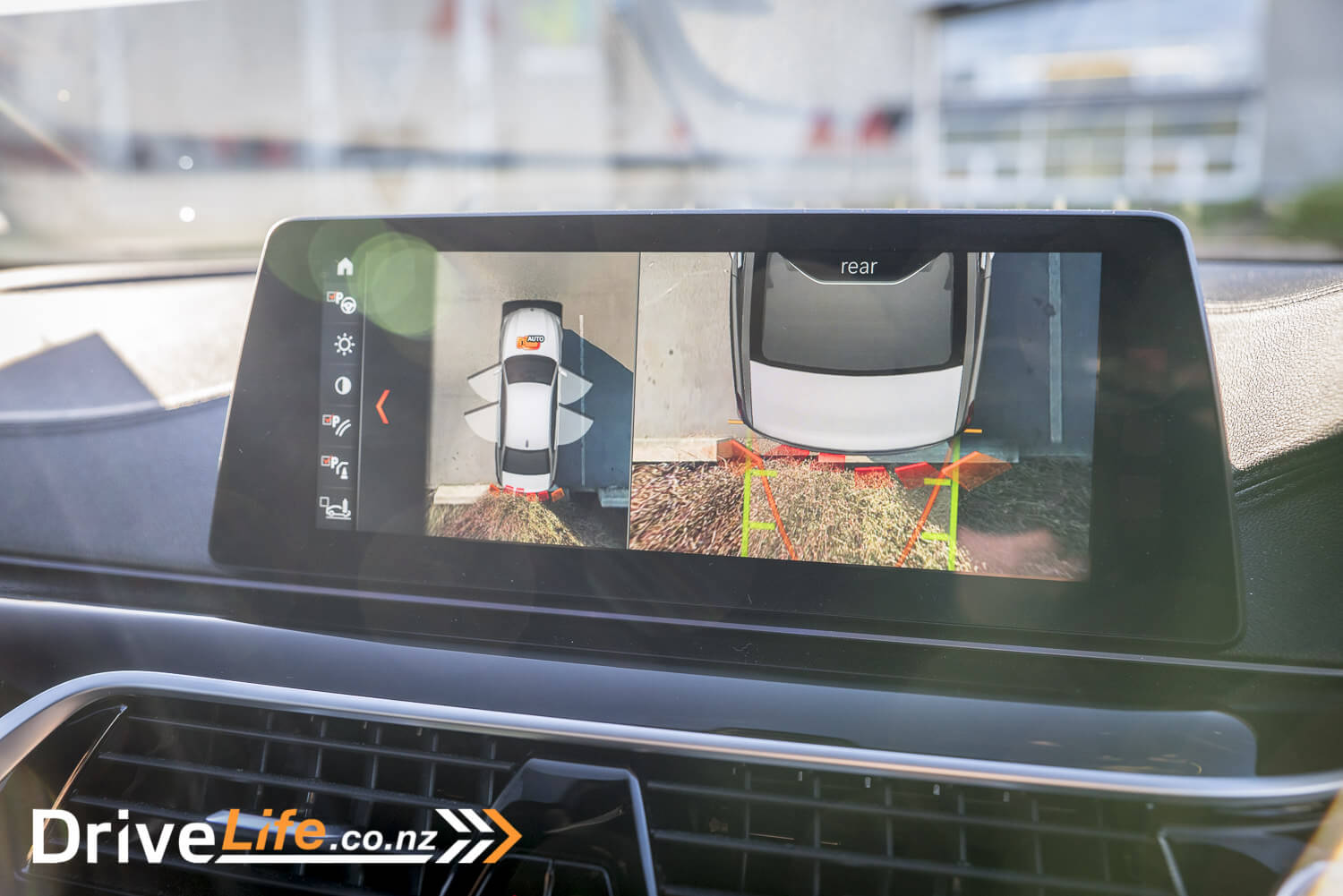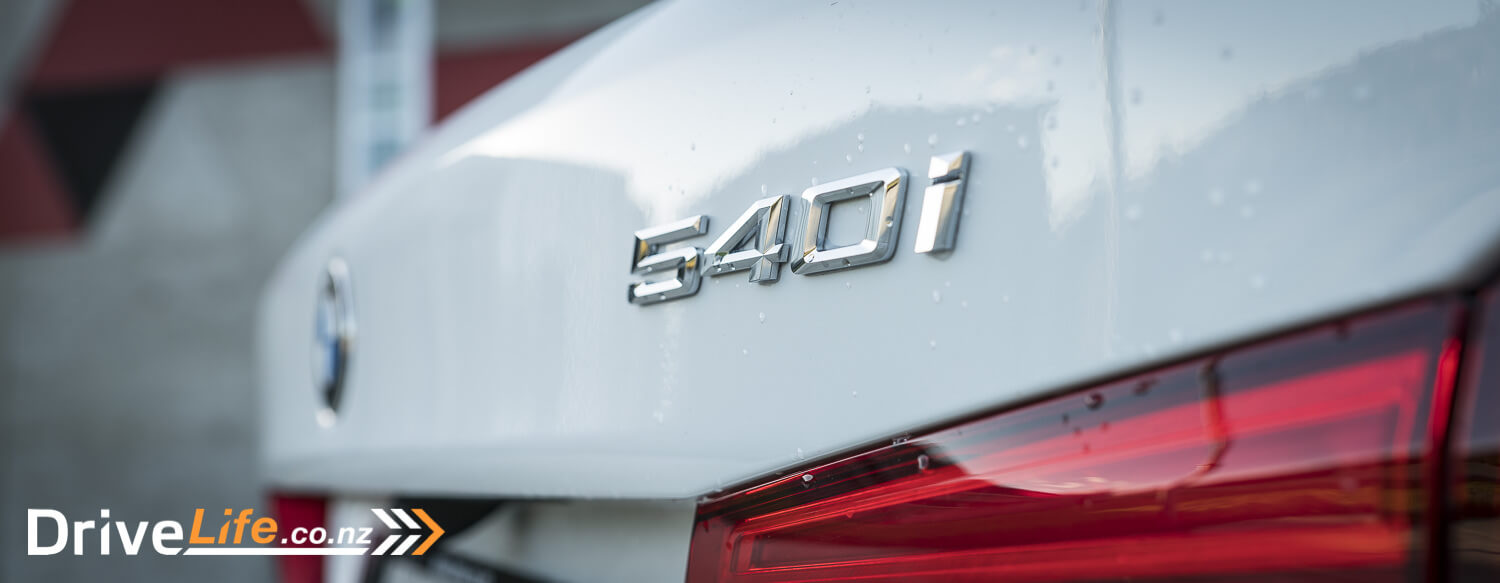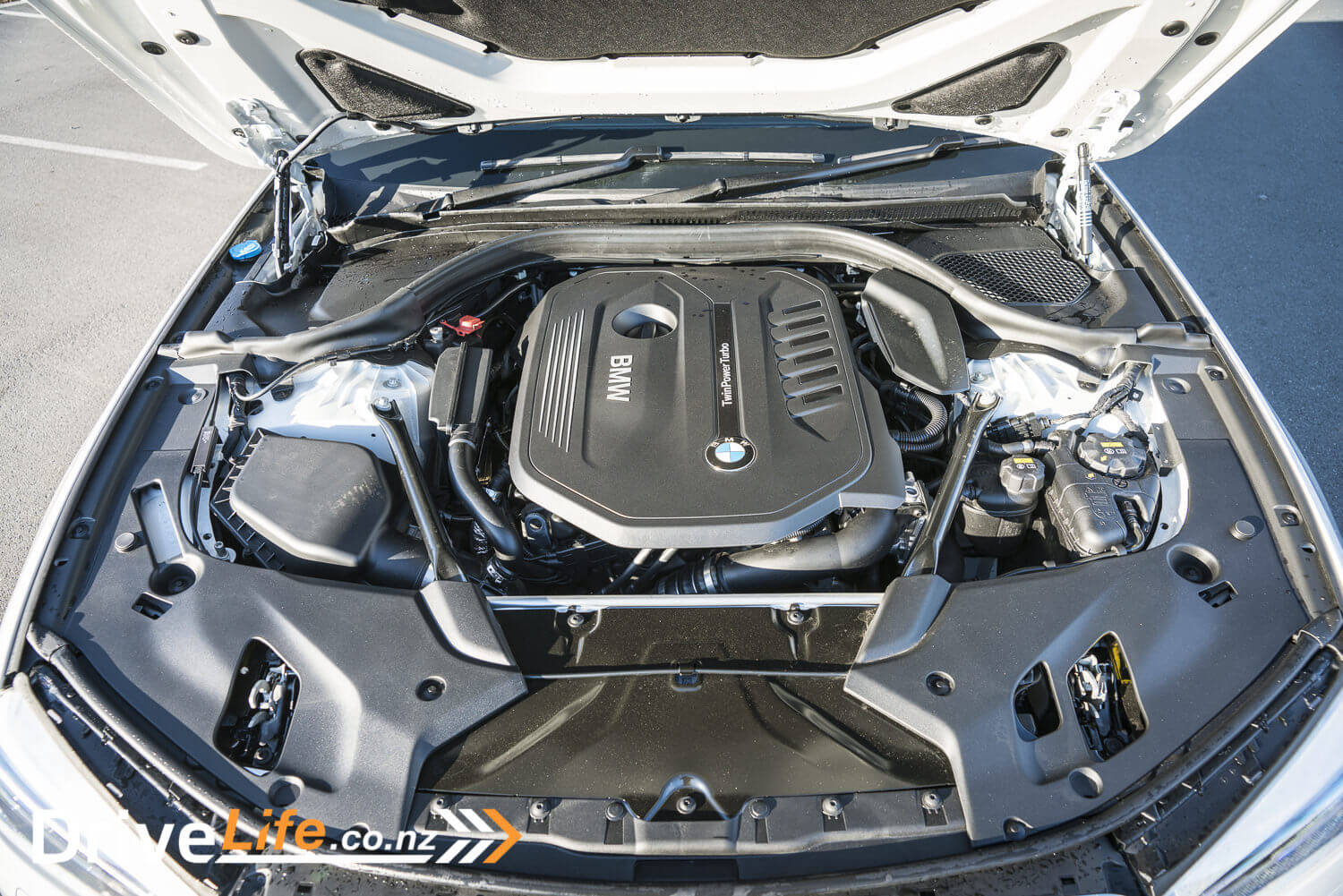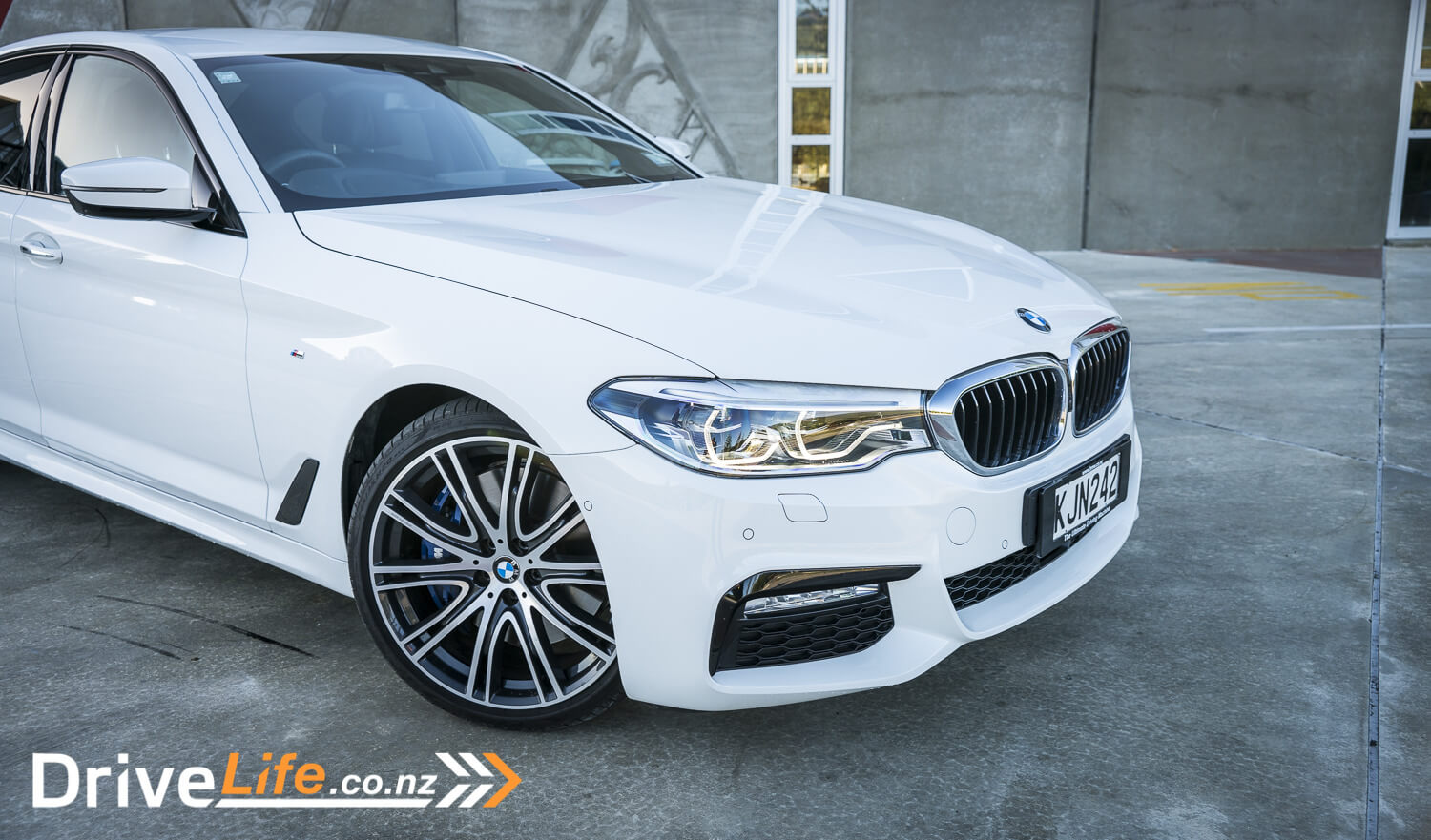It’s been three generations of 5 series BMW’s since we have seen a 540i. The E39 540i was available from 1997. The 540i was a well known and sought after model. It came out with a 4.4L V8 engine and available with a 6-speed manual or a 5-speed automatic, and a new onboard computer called the Multi-Information System.
Thankfully times have changed and for the better. BMW’s all new 2017 540i hopes to be everything that the previous model was and just as sought after. We spent a week with the new 540i to find out if BMW is on the right track or if it’s wishful thinking.
The Range
The new 5 Series range currently has 3 models in New Zealand. It starts with the 520d which starts at $99,900, the 530d starting $133,900 and the 540i starting at $142,900. The 5 series range of features and options are huge. The standard features on the 540i came with everything the 520d and the 530d has as standard.
To avoid having the next page filled with the features of the 540i I will try to summarise what it comes with. The 520d ($99,000) is powered by a 2.0L BMW TwinPower Turbo 4-cylinder diesel engine that produces 140Kw and 400Nm of torque. It comes with an 8-speed automatic transmission, Steptronic, Brake Energy Regeneration, Electric power steering with Servotronic, preparation for tow bar, Start/Stop button, exterior design and features, 18” BMW light-alloy wheels, V-spoke styling, automatic tailgate, heated exterior mirrors in body colour, High-beam Assist, Rain sensor and automatic driving controls, Driving Assistant Plus (includes Active Cruise Control), Parking Assistant Plus (includes Rear View Camera and Park
Distance Control (PDC) front and rear), Dynamic Stability Control (DSC), Anti-lock Braking System (ABS), Braking Assistant, Cornering Brake Control (CBC), Dynamic Traction Control (DTC) and Active Protection.
The 530d ($133,900) is powered by a 3.0L BMW TwinPower Turbo inline 6-cylinder diesel engine that produces 192 kW and 620 Nm of torque. In addition to what the 520d comes with the 530d comes with 8-speed sport automatic transmission with gearshift paddles, 19″ light alloy wheels W-spoke style, Bicolour, Adaptive LED Headlights, BMW Gesture Control, BMW Head-Up Display, Harman Kardon surround sound system, Sport Line, Sport Seats for driver and front passenger, Telephony with Wireless Charging for smartphone.
The 540i ($142,900) is powered by a 3.0L BMW TwinPower Turbo 6-cylinder petrol engine that produces 250Kw and 450Nm of torque. In addition to what the 530d and 520d comes with the 540i comes with 20” BMW Individual light-alloy wheels, V-Spoke styling, comfort seats for driver and front passenger, Driving Experience Control with Adaptive mode, exhaust tailpipe trapezoidal, M Sports Package, M Sports brake and sun protection glazing.
First Impressions
My first impressions were a bit underwhelming; it’s a large BMW sedan, and it’s white. Nothing very exciting, or interesting leapt out at me. It was ironically a 5 series by size, design and could even have been any of the previous models, as nothing else had seemed to really change.
Without seeing the previous model alongside it, I think most would have a hard time telling them apart. But in saying all that, this is not uncommon for BMW. Every now and then they make big changes, but most of the time, they are not unlike Porsche. With only slight changes to its design as they think they have hit the nail on the head. Don’t get me wrong, it does not look bad, but it just did not look that interesting either. I was, however, excited to see if this 540i had been optioned with the fancy new remote control key that had been showcased at the recent motor shows.
The Inside
The interior is much like any of the other BMW models on offer right now – clean, stylish and modern. Even though every model has its own unique look, they all share a very similar design language. The first thing you notice when the inside is the size of the dash, and how much space there is between you and the front. It’s a very spacious and comfortable cabin to be in. Our test car was optioned with black leather and piano black inlays. They do offer a range of interior colour, but black on black in a car like this is simple and will never age.
The seats themselves were amazing, and they will need about 20 minutes or so to find the perfect position. Not because they are awkward or badly designed, but because you can change almost every angle. From the arch of the back of the seat to the bolsters, to the length of the base of the seat. It took me a while, but I finally found the magic combination.
The rear seats are also very spacious, even getting in behind the driver seat setup in the position for a 6 foot 7 inch driver. There was still just enough room for me to get in the back without feeling squashed or being worried about how long the drive was going to be. The boot is a very healthy 530 litres, which can be expanded by lowering the two back seats, this can be done via some convenient buttons in the boot which will automatically drop the two back seats.
The wide-screen media display in the middle of the dash is crystal clear and very high resolution. The new media system has taken ideas from phone apps. In the default menu, you have 3 windows; Media, Navigation and Connect Drive. The media section shows what media or radio is playing at the time. Navigation displays a very small version of the nav map, which you can select and go full screen with. The Connect Drive is more of a useful info window, which can show you where fuel stations are if you need them, or what the weather currently is.
The dash is fully digital too, removing any of the analogue needles we all know and love. For me, this has not come soon enough. Since we have seen the digital dash from the Lexus LFA over 7 years ago, it’s taken a long time for this to flow down to even high-end production cars. The new digital dash allows the instruments to completely change when required. From standard needle shapes and light colors in the Comfort and Eco Pro modes to overhanging needles and racy colour in the Sports mode. BMW has not reached for the skies with this, but it’s nice to see that more changes are floating through. It should not be long, I hope until we can all customise the dashes to whatever we want to display, and in whatever theme we want to see it.
New tech is great, I am always keen to try out the latest gadgets that come out. However, If you want to look like a complete idiot while sitting in traffic, then you need the new Gesture system BMW is now offering – fixing what I can only see as something that was not broken. This system allows you to wave your hands in front of the media display screen, in some Harry Potter spell casting fashion. If you cast your spell correctly, you might be able to change or interact with a range of multimedia features. My spell casting powers were more muggle than a wizard, and I was only ever able to raise or lower the volume. I can only imagine how this looked from the outside, on the countless numbers of times I tried to get it working. For now, I will be sticking with the buttons, thanks, BMW.
The Drive
Driving the 540i on the day today was as expected of a luxury sedan. It was smooth, quiet, and very comfy. The 540i could almost be called dull, as it was not a very exciting car to drive, but it also did everything it was meant to do flawlessly. I drove the 540i for around 600 km, and after the many days and kilometres clocked up the car felt just like that spot on the couch you all love. It was somewhere that when you get into you could breathe a sigh of relief, as you know that you can relax in comfort, no matter how far you have to drive.
There were 4 types of drive modes; Comfort (default), EcoPro, Sport and Adaptive. Upon changing each mode the digital dash changes indicating which mode you are in. Comfort, which was the default mode, was like a cloud skimming across the road surface. The engine was never that intrusive, while always providing enough power from the 3.0L BMW TwinPower Turbo 6-cylinder petrol engine. The suspension setup is perfect for this mode, absorbing the road well, never letting you soak up any of the punishment the road has to offer.
Sports mode was not what I would have expected for a model that has the BMW M badge linked with it, which is displayed when the digital dash changes over to its performance mode. Power is supplied quicker than Comfort mode, but I found it a bit lurchy and not as predictable as other performance cars to drive. The other downside of this mode was that it had no impact on the suspension. It was still the same setup as in Comfort. This was a problem in a straight line and in the corners, as there was a huge amount of body roll. The seat bolsters did tighten up when you selected the Sports mode, which was cool, however, it was not enough to help with the boat-like feeling it had in the corners.
The Eco Pro mode was, strangely enough, my favourite of them all, and it’s mainly to do with how BMW have changed their view on how Eco modes work. Instead of forcing less power upon you or making everything sluggish. Eco Pro gave you almost the same power and feeling as the comfort mode, and a digital gauge to highlight how well or indistinctly you’re driving, in real time. From time to time, I would check the dash, and found myself correcting my style. The car did not drive slower, but acceleration was handled more efficiently from the driver, rather than being forced on you by the computer. As I was driving around the city I likened this to limousine or chauffeur driver training. Taking off smoothly, predicting traffic, and coming to a stop in a smoother style, compared to an abrupt stop. The Eco Pro mode embodies everything the 540i is all about.
The adaptive mode was the clever mode. This mode monitored your driving style and tried to give you the power or economy available, based on how you were driving. Personally, the driver had to make some changes and adapt too, and I think I would need more than a week to get used to this mode. Out of all the drive modes, I found myself spending most of my time in either Comfort or Eco Pro, as both of these modes suited the car and its drivetrain, resulting in a more luxurious experience.
BMW’s Parking Assistant Plus has to be one of the most impressive systems I have used to date. It’s very intuitive and seems to almost know what extra info you need at the right time. For example, if you are in a multistorey carpark, and you see a park that you think you can reverse into. First, you pull up past the spot as you normally would, select reverse, and turn the wheel. Right there you see the reverse camera display on the media screen, and the camera’s position turns with the wheel position, giving you a better line of sight in the direction you are going. Besides this view, you also have a top-down aerial view made from the many cameras around the car. As you reverse in, and the car detects you getting closer to the back of the parking spot, the camera view changes to a full-screen view of the top-down aerial view. Showing you in more detail and zoomed in, how close you are to the object at the back or side of the carpark. I found this system very easy to use, and it worked every time, always showing me what I needed to when I required it.
The Technology Pack that comes with BMW Display Key, Remote Control Parking and Apple CarPlay is an $1,450 option. I was unable to test any of these options, as I do not have an Apple iPhone, and I did not get the BMW Display key when we were testing the 540i. Not sure why, it may have been a safety thing or just a simple mistake. This magic key would have given me the ability to start and stop the engine remotely. And would also allow me to drive the car a couple of meters, out from a car park spaces for example. It was a disappointing and missed opportunity to test the BMW Display Key and Remote Control Parking features.
What it’s up against
In this price bracket, your options are the usual suspects, Jaguar, Audi, Mercedes-Benz and Lexus. There are other options, from Volvo, VW and even Porsche. But Porsche falls into price bracket $50k higher and VW and Volvo around $50k lower, and do not come with comparable specs.
Luxury Sedan
| Brand / Model | Engine | Power Kw/Nm | Fuel L/100km | Boot Capacity Litres | Price Highest to Lowest |
| Porsche Panamera | 3.0L V6 Turbo | 243 kw / | 7.5 L | 495 | $210,000 |
| Jaguar XJ | 3.0L V6 Turbo Diesel | 221 Kw / 700 Nm | 5.7 L | 540 | $155,500 |
| Audi A6 | 3.0 BiTDI quattro | 235 Kw / 650 Nm | 6.0 L | 530 | $146,900 |
| BMW 540i | 3.0L Twin Turbo V6 | 250 Kw / 450 Nm | 6.7 L | 530 | $142,900 |
| Lexus GS 350 F Sport | 3.6L V6 VVT-iW | 232 Kw / 380 Nm | 9.3 L | 520 | $131,900 |
| Mercedes-Benz E400 | 3.0L Twin Turbo V6 | 245 Kw / 480 Nm | 8.5 L | 540 | $131,900 |
| Volvo S90 | 2.0L i4 Turbo | 235 Kw / 400 | 7.8 L | 382 | $99,900 |
| VW Arteon (coming soon to NZ) | 2.0L i4 Turbo | 206 Kw / 350 Nm | NA | 563 | $74,990 |
| Pros | Cons |
|
|
What do we think?
The BMW 540i is a great car, and it has so much tech. BMW is pushing the technology even to the point of being ahead of Mercedes-Benz, who are leaders in new luxury tech from their S class. I have expected more from the 540i, and maybe this will come with a 550 variant, but right now, the 540i is the top of the range 5 series you can buy.
It’s a great luxury car but is let down by its performance characteristics. Something as simple as a 2-stage suspension system would have changed this car and given it a great all round impact.
But if you’re after luxury, and you don’t care for the performance side of things, the BMW 540i is going to be a hard one to beat.
Rating – Chevron rating 4 out of 5
2017 BMW 540i Sedan
| Vehicle Type | Rear Wheel Drive Luxury Sedan |
| Starting Price | $142,900 |
| Tested Price | $147,890 |
| Engine | 3.0L BMW TwinPower Turbo 6-cylinder petrol engine |
| Transmission | 8-speed sport automatic transmission with gearshift paddles |
| Kerb Weight | 1770 kg |
| Length x Width x Height | 4936 x 1868 x 1466 mm |
| Cargo Capacity | 530 Litres |
| Fuel Tank | 66 litres |
| Fuel Efficiency | Advertised Spec – Combined – 6.7 L / 100km
Real World Test – Combined – 9.5 L / 100km |
| ANCAP Safety Ratings | 5 Stars |


